
Dorset is a ceremonial county in South West England. It is bordered by Somerset to the north-west, Wiltshire to the north and the north-east, Hampshire to the east, the Isle of Wight across the Solent to the south-east, the English Channel to the south, and Devon to the west. The largest settlement is Bournemouth, and the county town is Dorchester.

The Isle of Portland is a tied island, 6 kilometres (4 mi) long by 2.7 kilometres (1.7 mi) wide, in the English Channel. The southern tip, Portland Bill, lies 8 kilometres (5 mi) south of the resort of Weymouth, forming the southernmost point of the county of Dorset, England. A barrier beach called Chesil Beach joins Portland with mainland England. The A354 road passes down the Portland end of the beach and then over the Fleet Lagoon by bridge to the mainland. The population of Portland is 13,417.
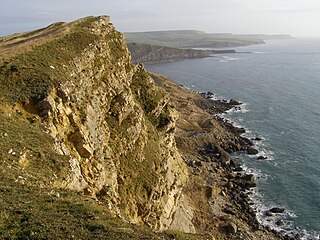
The Jurassic Coast is a World Heritage Site on the English Channel coast of southern England. It stretches from Exmouth in East Devon to Studland Bay in Dorset, a distance of about 96 miles (154 km), and was inscribed on the World Heritage List in mid-December 2001.

Portland Harbour is located beside the Isle of Portland, Dorset, on the south coast of England. Construction of the harbour began in 1849; when completed in 1872, its 520-hectare (1,300-acre) surface area made it the largest human-made harbour in the world, and it remains one of the largest in the world today. It is naturally sheltered by Portland to the south, Chesil Beach to the west and mainland Dorset to the north. It consists of four breakwaters: two southern and two northern. These have a total length of 4.57 km (2.84 mi) and enclose approximately 1,000 ha of water.

Wyke Regis is a village in the civil parish of Weymouth, in south Dorset, England. The village is part of the south western suburbs of Weymouth, on the northern shore of Portland Harbour and the south-eastern end of Chesil Beach. Wyke is 15 kilometres (9 mi) south of the county town, Dorchester. The village has a population of around 5,500.

Weymouth Bay is a sheltered bay on the south coast of England, in Dorset. It is protected from erosion by Chesil Beach and the Isle of Portland, and includes several beaches, notably Weymouth Beach, a gently curving arc of golden sand which stretches from the resort of Weymouth. Weymouth Bay is situated approximately halfway along the UNESCO Jurassic Coast World Heritage Site.
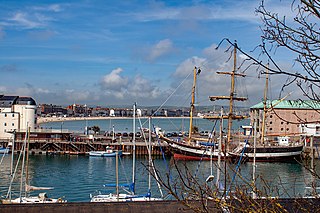
Weymouth is a sea-side town and civil parish in the Dorset district, in the ceremonial county of Dorset, on the English Channel coast of England. Situated on a sheltered bay at the mouth of the River Wey, 7 miles (11 km) south of the county town of Dorchester, Weymouth had a population of 53,427 in 2021. It is the third-largest settlement in Dorset after Bournemouth and Poole. The greater Weymouth urban area has a population of 72,802.

Bowers Quarry/Mine is an active stone quarry on the west side of the Isle of Portland, Dorset, England. The quarry is operated by Albion Stone and became the site of the first Portland Stone mine. In October 2002 the firm successfully initiated Portland's first ever underground mining operation, which was a precursor to Jordans Mine, which would start in 2008. It has also been the selected site for the planned Mass Extinction Memorial Observatory.
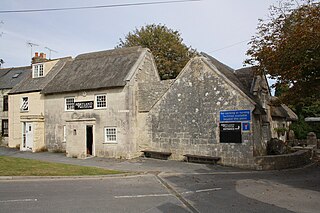
Portland Museum is a museum on the Isle of Portland in Dorset, southern England. It is located at the southern end of the hamlet of Wakeham. The museum is housed in two 17th-century thatched cottages, which have both been Grade II Listed since 1951. One of the museum's cottages, Avice's Cottage, is featured in Thomas Hardy's 1897 novel The Well-Beloved, as the home of three generations of "Avices" - the novel's heroines.
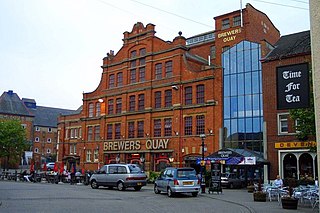
The Timewalk was an exhibition and visitor attraction located in Brewers Quay, Weymouth, Dorset. It opened in 1990 and closed in 2010. One of Weymouth's most popular attractions, Timewalk took visitors on a journey covering the town's history and maritime connections from the 14th century onwards. It was told by the brewery cat, Miss Paws, and her eight feline ancestors. The attraction aimed to "recreate the sights, sounds and smells, of six hundred years of maritime history".
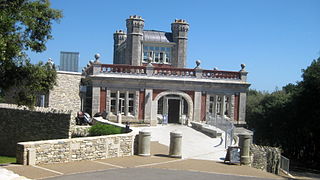
Durlston Castle stands within Durlston Country Park, a 1.13 square-kilometre (280-acre) country park and nature reserve stretching along the coastline south of Swanage, on the Isle of Purbeck in Dorset.
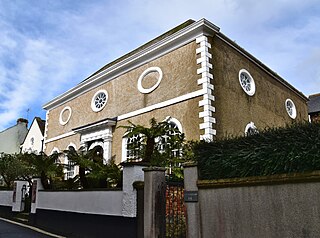
Dinosaurland Fossil Museum is a privately owned fossil museum in Lyme Regis, on the Jurassic Coast in Dorset, England. The museum is located in a historic Grade I listed former congregational church building.

Dorset is a county located in the middle of the south coast of England. It lies between the latitudes 50.512°N and 51.081°N and the longitudes 1.682°W and 2.958°W, and occupies an area of 2,653 km2. It spans 90 kilometres (56 mi) from east to west and 63 kilometres (39 mi) from north to south.

Nothe Gardens is a public garden, located in Weymouth, Dorset, England. Positioned on the Nothe Peninsula overlooking both Weymouth and Portland harbours, the informal gardens are often acclaimed to be the most beautiful the borough has to offer.

The Jurassic Skyline tower was an observation tower on Weymouth Pier in Weymouth, Dorset, England. It was situated next to Weymouth Beach and the Weymouth Pavilion, where it overlooked Weymouth town, the beach, the Pavilion, the Old Harbour, Nothe Gardens, the Nothe Fort, and Portland Harbour. It opened on 22 June 2012.

Broadcroft Quarry is an active stone quarry and part butterfly nature reserve located on the Isle of Portland, Dorset, England. It is located towards the eastern side of the island, where it lies to the east of the village Easton and close to The Grove village. The reserve section is now a valued home for a number of butterfly species, while the working quarry area is one of the largest active quarries on Portland and has supplied London with natural Portland stone for many years. The quarry is owned by Portland Stone Firms Ltd, along with Perryfield and Coombefield Quarries. The firm is the largest landholder on the island. The nature reserve is managed by Butterfly Conservation.

The Dinosaur Museum is a museum presenting dinosaurs in Dorchester, the county town of Dorset, in southern England.

Michael Hanlon was a British science writer and newspaper science editor.
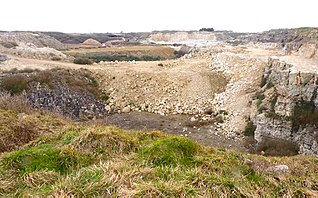
Yeolands Quarry is a disused stone quarry located on the Isle of Portland, Dorset, England. It is located on the eastern side of Portland, where it lies east of the village Easton and south of The Grove village. The quarry is one of the largest on Portland, at 120 feet (37 m) deep, 300 feet (91 m) wide. It is now abandoned for extracting stone, though the adjacent Broadcroft Quarry to the west, which links to Yeolands, is still in some use, as well as being a butterfly reserve.




















